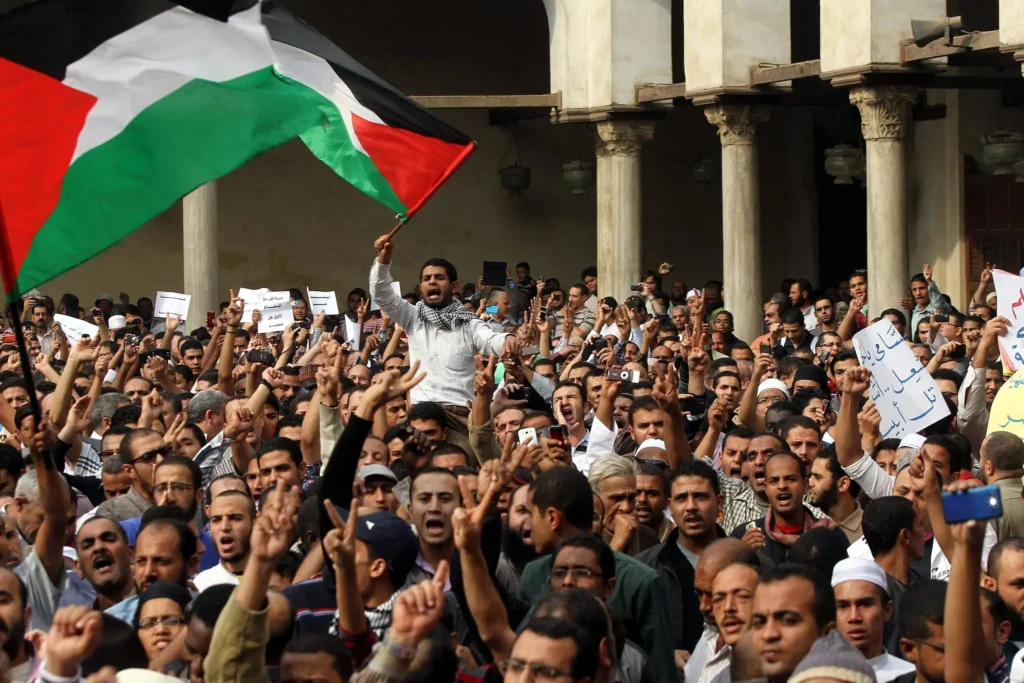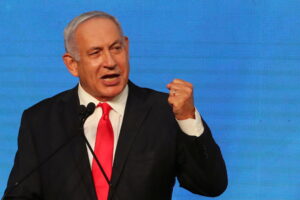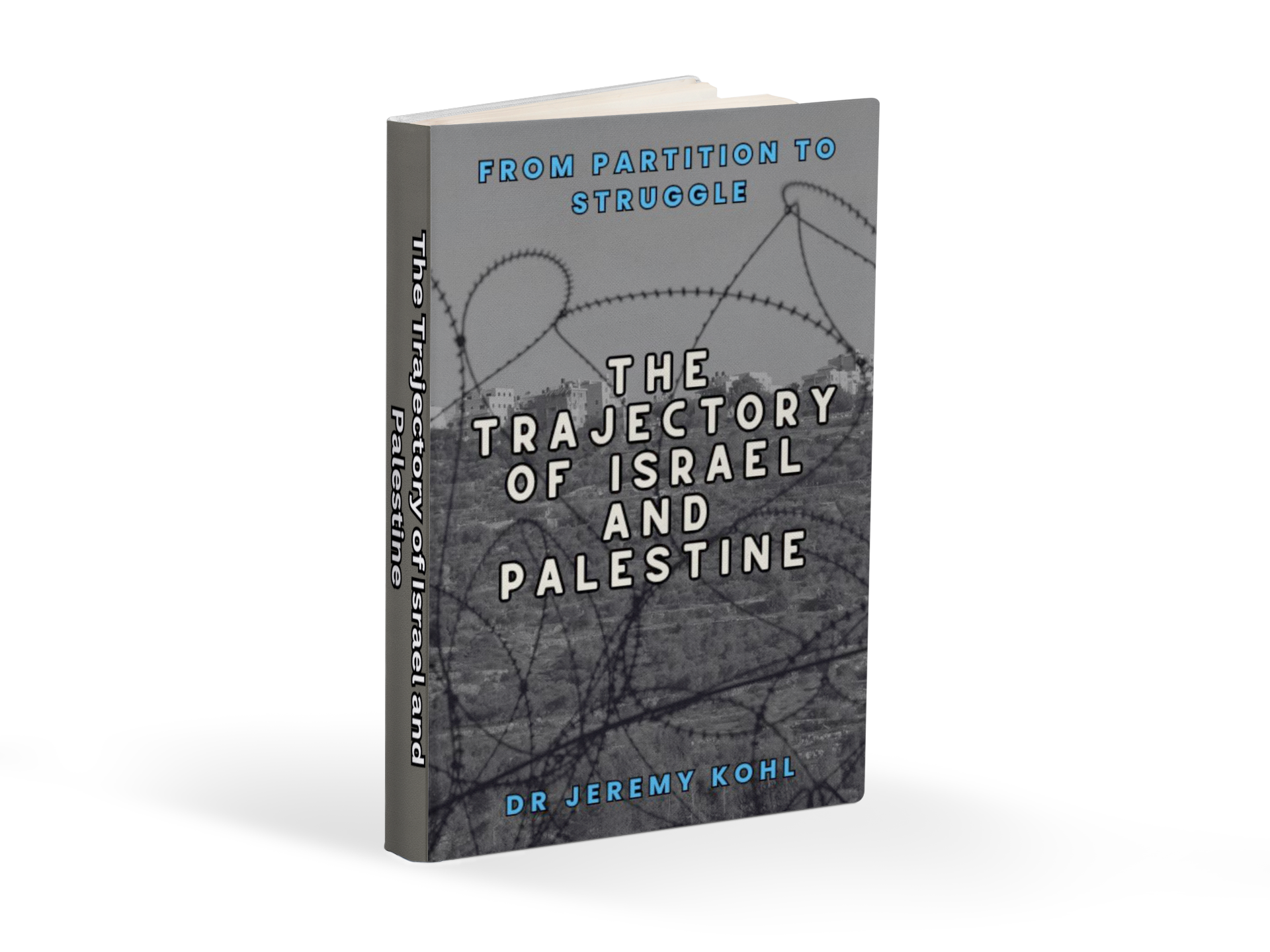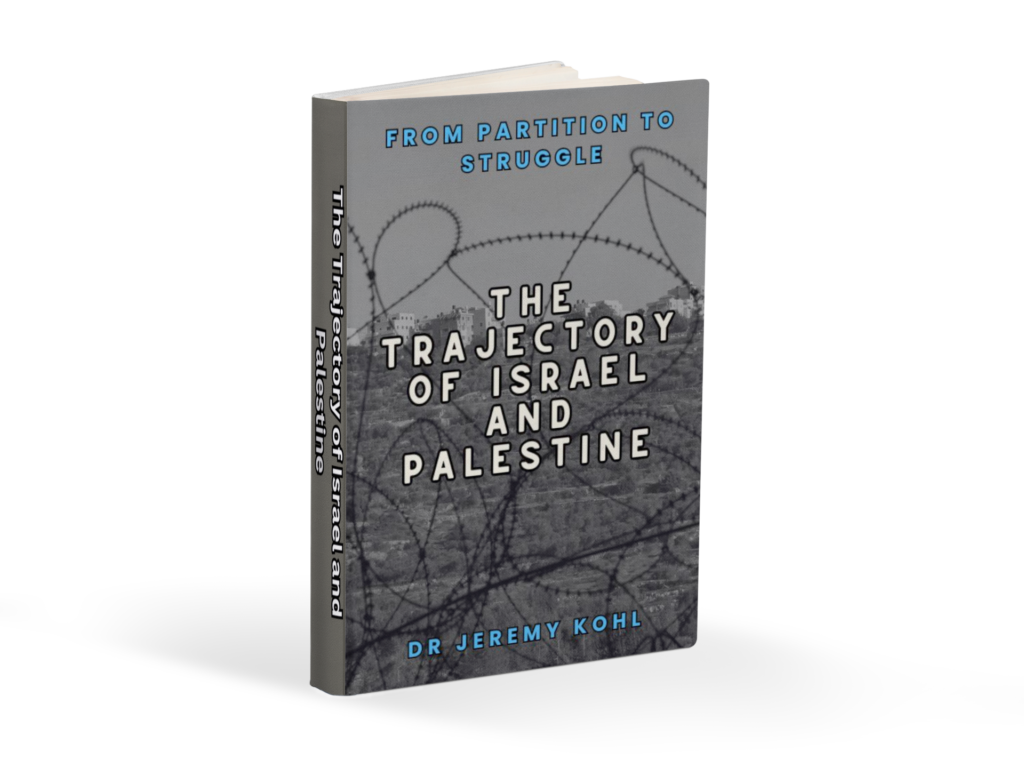In this article, we will explore the complex and often volatile relationship between Israel and Hamas. The ongoing conflict between these two entities has garnered international attention and has far-reaching implications for the region. By delving into the roots of the conflict and understanding the motivations and tactics of both sides, we can gain a better grasp of the complexities at play and the potential paths towards peace. So grab a cup of tea and let’s dive into the intricacies of the Israeli conflict with Hamas.

Israeli Conflict with Hamas
The Israeli conflict with Hamas is a complex and longstanding issue that has its roots in a deep history of conflict and tension in the region. Understanding the factors that have contributed to this conflict is essential for grasping its significance and complexity. This article will provide a comprehensive overview of the Israeli conflict with Hamas, examining its historical background, root causes, the role of external actors, major events in the timeline, the Israeli approach, Hamas’ strategy and actions, the humanitarian crisis in Gaza, peace process and negotiations, efforts towards resolution and ceasefires, as well as the prospects for peace.
Historical Background
The historical background of the Israeli conflict with Hamas begins with the creation of the state of Israel in 1948. The establishment of Israel led to the displacement of many Palestinians who became refugees in neighbouring Arab countries. This displacement and the subsequent conflicts over land ownership and national identity have played a significant role in shaping the ongoing conflict between Israel and Hamas.
Creation of Hamas
Hamas, or the Islamic Resistance Movement, was founded in 1987 during the first Intifada, a Palestinian uprising against Israeli occupation. It emerged as a political and militant group with the objective of challenging Israeli occupation and establishing an Islamic state in all of historic Palestine. While being initially focused on resistance against Israeli occupation, Hamas has become a key player in the wider Palestinian political landscape.
Objectives and Tactics of Hamas
Hamas has two primary objectives: the liberation of all Palestinian land and the establishment of an Islamic state in place of Israel. To achieve these objectives, Hamas has employed both political and military tactics. Politically, Hamas has sought to gain popular support through its social welfare programs and charitable activities, while militarily, it has engaged in armed resistance, such as rocket attacks and suicide bombings.
Gaza Strip and West Bank
The Israeli conflict with Hamas is centred primarily in two territories: the Gaza Strip and the West Bank. The Gaza Strip, a small coastal enclave, has been under Israeli blockade since 2007, after Hamas took control of the territory. The West Bank, on the other hand, is occupied by Israel and has been a site of settlements and frequent clashes between Israeli forces and Palestinian civilians.
Israeli Occupation
The Israeli occupation of Palestinian territories has been a central issue in the Israeli conflict with Hamas. Since the Six-Day War in 1967, Israel has occupied the West Bank, including East Jerusalem, and the Gaza Strip. The occupation has resulted in the expansion of Israeli settlements, restrictions on Palestinian movement, and the establishment of a separate legal system for Palestinians, leading to widespread resentment and resistance.
Israeli Settlements
Israeli settlements in the occupied territories have been a major point of contention between Israel and Hamas. These settlements, considered illegal under international law, have been a source of anger and frustration for Palestinians. The expansion of settlements has also hindered the prospects for a viable Palestinian state, as they continue to encroach on Palestinian land and resources.

Peace Process and Oslo Accords
The peace process between Israel and the Palestinians, particularly the Oslo Accords signed in 1993, aimed to establish a framework for resolving the Israeli-Palestinian conflict. The Oslo Accords created the Palestinian Authority (PA) and set the stage for a series of negotiations for a final status agreement. However, the peace process has been marred by ongoing violence, political disagreements, and the failure to reach a comprehensive resolution.
First Intifada
The first Intifada, which erupted in 1987, marked a significant turning point in the Israeli conflict with Hamas. It was a popular uprising against Israeli occupation characterized by acts of civil disobedience, protests, and violent clashes with Israeli forces. The first Intifada gave rise to Hamas and other Palestinian resistance movements and drew international attention to the plight of the Palestinians under Israeli occupation.
Arafat and Palestinian Authority
Yasser Arafat, the leader of the Palestinian Liberation Organization (PLO), played a crucial role in the peace process and the establishment of the Palestinian Authority. Arafat and the PLO recognized Israel’s right to exist and engaged in negotiations with Israel, culminating in the signing of the Oslo Accords. However, the failure to achieve a final status agreement and escalating violence have complicated the prospects for a peaceful resolution.
Hamas Rise to Power
In 2006, Hamas won a majority of seats in the Palestinian Legislative Council in a democratic election, leading to its rise to power. This victory signaled a shift in Palestinian politics and exposed divisions within the Palestinian political landscape. The international community, including Israel and the United States, considered Hamas a terrorist organization and imposed sanctions, further isolating the Palestinian territories.
Root Causes of the Conflict
The Israeli conflict with Hamas is rooted in several factors that have contributed to the ongoing tension and hostility in the region.
Dispute over Land
At the heart of the Israeli conflict with Hamas lies the dispute over land. Both Israelis and Palestinians claim historical and religious ties to the land, particularly Jerusalem and the surrounding areas. This territorial dispute has fuelled conflict and competing narratives, making a resolution challenging.
Religious and Nationalistic Claims
Religious and nationalistic claims play a significant role in the Israeli conflict with Hamas. For many Israelis, the land of Israel holds deep religious and historical significance, while Palestinians view it as their ancestral homeland. These differing religious and nationalistic narratives contribute to a sense of identity and fuel the ongoing conflict.
Divergent Political Agendas
The Israeli conflict with Hamas is also driven by divergent political agendas. Israel seeks to maintain its security and promote its interests, while Hamas is motivated by a desire for self-determination, resistance against Israeli occupation, and the establishment of an Islamic state. These differing political agendas often clash and complicate efforts to resolve the conflict.
Refugees and Right of Return
The Palestinian refugee issue and the right of return are critical factors in the Israeli conflict with Hamas. The displacement of Palestinians during the creation of Israel in 1948 and subsequent conflicts has created a significant refugee population. The right of return, which seeks to restore the refugee’s right to reclaim their property and return to their homeland, is a contentious issue that adds to the complexity of the conflict.
Lack of Trust and Communication
A lack of trust and effective communication between the parties involved contributes to the ongoing Israeli conflict with Hamas. Deep-seated mistrust, resentment, and a history of violence have made it difficult for meaningful dialogue to take place. As a result, the conflict continues to persist with limited progress towards a resolution.

Role of External Actors
The Israeli conflict with Hamas is not limited to the two parties directly involved but also involves various external actors who have influence in the region.
International Community
The international community, composed of various countries and organizations, plays a crucial role in the Israeli conflict with Hamas. The stance and actions of these actors have significant implications for the dynamics of the conflict and the prospects for a peaceful resolution.
United Nations
The United Nations (UN) has been involved in efforts to mediate and facilitate a resolution to the Israeli conflict with Hamas. UN resolutions and initiatives have aimed to address issues such as settlements, the humanitarian situation, and the right of self-determination for Palestinians. However, the effectiveness of these efforts has been limited due to geopolitical considerations and divergent interests among member states.
United States
As a major global power and key ally of Israel, the United States has played a significant role in the Israeli conflict with Hamas. The U.S. has sought to facilitate peace negotiations and provide support to Israel. However, its involvement has been criticized by some for its perceived bias towards Israel, which has complicated the prospects for an unbiased resolution.
Arab States
Arab states, particularly neighbouring countries, have a stake in the Israeli conflict with Hamas. These countries have historically supported the Palestinian cause and have been involved in efforts to mediate and support Palestinian rights. However, divisions among Arab states and their own geopolitical challenges have limited their ability to effectively address the conflict.
Iran and Hezbollah
Iran and Hezbollah, both actors with significant influence in the region, have supported Hamas as part of their broader agendas. Iran has provided financial and military support to Hamas, while Hezbollah has trained Hamas fighters. The involvement of Iran and Hezbollah in the Israeli conflict with Hamas adds another layer of complexity and potential escalation.
Timeline of Major Events
To better understand the Israeli conflict with Hamas, it is essential to consider the major events that have shaped its trajectory over time.
1948 Arab-Israeli War and Creation of Israel
The 1948 Arab-Israeli War, also known as the War of Independence, led to the creation of the state of Israel. The war resulted in the displacement of many Palestinians and set the stage for the decades-long Israeli-Palestinian conflict.
1967 Six-Day War
The Six-Day War in 1967 marked a significant turning point in the Israeli conflict with Hamas. Israel’s victory in this war led to its occupation of the West Bank, Gaza Strip, and other territories, resulting in increased tensions and resistance.
1973 Yom Kippur War
The Yom Kippur War, also known as the October War, was a conflict between Israel and a coalition of Arab states, primarily Egypt and Syria. The war, though not directly involving Hamas, solidified the Israeli-Palestinian conflict and contributed to the ongoing tensions in the region.
1987 First Intifada
The first Intifada, which began in 1987, marked a significant escalation of Palestinian resistance against Israeli occupation. The uprising demonstrated the determination of the Palestinian people to challenge Israeli control and led to the emergence of Hamas as a key player in the conflict.
1993 Oslo Accords
The Oslo Accords, signed in 1993 between Israel and the Palestine Liberation Organization (PLO), aimed to establish a peace process and a framework for a final status agreement. However, the accords failed to lead to a permanent resolution, and their implementation has been marked by ongoing violence and the failure to address key issues.
2000 Second Intifada
The second Intifada, also known as the Al-Aqsa Intifada, erupted in 2000 following a visit by then-Israeli Prime Minister Ariel Sharon to the Al-Aqsa Mosque complex in Jerusalem. The Intifada resulted in significant violence and increased tensions between Israel and Hamas, worsening the prospects for peace.
2005 Gaza Disengagement
In 2005, Israel unilaterally disengaged from the Gaza Strip, evacuating all Israeli settlements and withdrawing its military forces. The disengagement was intended to alleviate tensions but resulted in Hamas coming to power in the Gaza Strip and the subsequent imposition of a blockade by Israel.
2006 Hamas Victory in Palestinian Legislative Council
Hamas won a majority of seats in the Palestinian Legislative Council in 2006, marking a significant political shift in Palestinian politics. However, the international community, including Israel and the United States, refused to recognize the legitimacy of the Hamas-led government due to its refusal to renounce violence and recognize Israel.

2008-2009 Gaza War
The Gaza War, also known as Operation Cast Lead, took place between December 2008 and January 2009. The conflict escalated following the expiration of a ceasefire and resulted in significant civilian casualties and infrastructure damage. The war further strained relations between Israel and Hamas and deepened the humanitarian crisis in the Gaza Strip.
2014 Gaza War
The Gaza War of 2014, also known as Operation Protective Edge, was another major military conflict between Israel and Hamas. The war was marked by intense airstrikes, rocket attacks, and ground incursions, resulting in the deaths of thousands of Palestinians and Israelis and widespread destruction.
Israeli Approach to the Conflict
Israel has employed several approaches in dealing with the Israeli conflict with Hamas. These approaches reflect its commitment to national security and its efforts to address the threats posed by Hamas.

Military Response
Given the security threats posed by Hamas, Israel has responded through military means. Israel has employed various strategies, including targeted assassinations, airstrikes, and ground incursions, to weaken Hamas and prevent attacks on its territory. These military responses, however, have been criticized for their disproportionate impact on Palestinian civilians and the resultant humanitarian crisis.
Blockade on Gaza Strip
Israel has imposed a blockade on the Gaza Strip since 2007, following the Hamas takeover of the territory. The blockade restricts the movement of goods and people in and out of Gaza, effectively isolating its population. Critics argue that the blockade has exacerbated the humanitarian crisis and violated the rights of Palestinians living in the Gaza Strip.
Targeted Assassinations
Israel has employed targeted assassinations as a strategy to eliminate senior Hamas leaders and disrupt the group’s operations. This tactic aims to weaken Hamas and deter future attacks. However, it has been criticized for its extrajudicial nature and the potential for collateral damage, putting innocent civilians at risk.
Settlement Building
Israel’s policy of settlement building in the occupied territories, particularly in the West Bank, has been a contentious issue in the Israeli conflict with Hamas. The expansion of settlements has been viewed as a provocation by Palestinians and a violation of international law. Settlement building has hindered the prospects for a two-state solution and often leads to clashes between Israeli settlers and Palestinians.
Iron Dome Missile Defence System
To defend its territory from rocket attacks launched by Hamas, Israel has developed the Iron Dome missile defense system. Iron Dome intercepts and destroys incoming rockets, providing a measure of protection for Israeli civilians. While effective in reducing casualties, its deployment has not solved the underlying issues driving the conflict.
Hamas’ Strategy and Actions
Hamas has employed various strategies and actions in its resistance against Israeli occupation and pursuit of its objectives. Understanding these tactics is crucial for comprehending the role and impact of Hamas in the Israeli conflict.

Terrorist Attacks
Hamas has been involved in numerous terrorist attacks against Israeli civilians over the years. These attacks include suicide bombings, shootings, and stabbings, designed to instil fear and exert pressure on Israel. Such attacks have resulted in considerable loss of life on both sides and have contributed to the deepening cycle of violence.
Rocket Launches
One of Hamas’ most recognizable tactics is the launching of rockets from the Gaza Strip into Israeli territory. These rockets, often crude and unguided, are fired indiscriminately towards civilian areas. While their impact and effectiveness can be limited due to Israeli defense systems, such as Iron Dome, they have nevertheless caused fear and disruption for Israeli communities near the Gaza border.
Tunnel Network
Hamas has developed an extensive network of tunnels within the Gaza Strip, which it has used for various purposes. These tunnels have been used for smuggling weapons, supplies, and fighters, as well as for launching surprise attacks on Israeli military targets. Israel has targeted these tunnels as part of its military response, leading to casualties and infrastructure damage.
Use of Civilians as Human Shields
Hamas has been accused of using civilians as human shields, a tactic that involves locating military assets and personnel in or near civilian areas to deter Israeli strikes. This strategy puts Palestinian civilians at risk of harm and has been widely condemned as a violation of international humanitarian law.
Social Welfare Programs
In addition to its military activities, Hamas has also established social welfare programs and charitable activities to gain popular support among Palestinians. These programs provide vital services in education, healthcare, and social support, which has helped to build grassroots support for Hamas among some Palestinians.
Humanitarian Crisis in Gaza
The Israeli conflict with Hamas has contributed to a severe humanitarian crisis in the Gaza Strip. The blockade imposed by Israel, coupled with internal political divisions and limited resources, has exacerbated the suffering of the Palestinian population.

Blockade and Economic Impact
The blockade on the Gaza Strip has had severe economic consequences, with restrictions on the movement of goods and people inhibiting economic growth and development. This has resulted in high levels of unemployment, poverty, and a dependency on aid.
Limited Access to Basic Necessities
The blockade has significantly limited access to basic necessities, including food, clean water, and medical supplies. Palestinians in the Gaza Strip face shortages in essential goods and rely heavily on aid organizations for their daily needs.
Human Rights Violations
The Israeli conflict with Hamas has brought with it numerous human rights violations. Both sides have been accused of committing war crimes, including indiscriminate attacks on civilians and extrajudicial killings. The situation in the Gaza Strip has been a particular concern, with reports of excessive use of force, arbitrary detention, and restrictions on freedom of movement.
Mental Health and Trauma
The ongoing conflict and the resultant humanitarian crisis have taken a severe toll on the mental health and well-being of Palestinians, particularly children. The constant exposure to violence, loss of loved ones, and the lack of access to basic services have led to high rates of trauma, anxiety, and depression.
Peace Process and Negotiations
Efforts to resolve the Israeli conflict with Hamas have included various peace process initiatives and negotiations aimed at reaching a comprehensive settlement.
Camp David Summit 2000
The Camp David Summit held in 2000 marked a significant attempt to achieve a final status agreement. The summit, facilitated by the United States, brought together Israeli and Palestinian leaders, but ultimately failed to produce an agreement due to disagreements over key issues, such as borders, Jerusalem, and the right of return.
Roadmap for Peace 2003
The Roadmap for Peace, proposed by the United States, European Union, Russia, and the United Nations, aimed to outline a path towards a two-state solution. The roadmap called for an end to violence, the dismantling of settlements, and the establishment of an independent Palestinian state. However, its implementation faced numerous obstacles and was ultimately unsuccessful.
Annapolis Conference 2007
The Annapolis Conference, held in 2007, aimed to revive the peace process and negotiate a final status agreement. The conference brought together Israeli and Palestinian leaders, along with representatives from the international community, but the process was once again marred by disagreements and a lack of progress.
Peace Talks and Statehood Bid
Peace talks between Israel and the Palestinian Authority have continued sporadically, with multiple attempts to negotiate a comprehensive settlement. The Palestinian Authority has also pursued diplomatic efforts, such as initiatives for recognition of statehood by the United Nations and other international bodies.
United Nations Recognition of Palestine
The United Nations General Assembly granted non-member observer state status to Palestine in 2012, recognizing it as a “state.” This move provided the Palestinians with increased international recognition and legitimacy, but it did not resolve the underlying issues or lead to a comprehensive resolution of the conflict.

Efforts Towards Resolution and Ceasefires
Efforts towards resolution and the establishment of ceasefires have been key components of addressing the Israeli conflict with Hamas.
Egyptian-Mediated Negotiations
Egypt has played a crucial role as a mediator in negotiations between Israel and Hamas. Through its diplomatic efforts, Egypt has facilitated several ceasefire agreements and brokered talks aimed at resolving the conflict. Despite occasional progress, these negotiations have often been fragile, leading to repeated cycles of violence.
Qatar and Turkey’s Role
Qatar and Turkey have also been influential in mediating and supporting efforts to resolve the Israeli conflict with Hamas. These countries have supported Hamas politically and financially, providing aid and acting as intermediaries in negotiations with Israel.
Ceasefire Agreements
Various ceasefire agreements have been reached between Israel and Hamas, aiming to halt the violence and maintain peace. However, these agreements have often been short-lived and violated by both sides, leading to repeated escalation and a cycle of retaliation.
UN Resolutions and Truce Attempts
The United Nations has passed numerous resolutions aimed at resolving the Israeli conflict with Hamas. These resolutions have called for an end to the violence, the withdrawal of Israeli forces from occupied territories, and the establishment of a Palestinian state. However, the implementation of these resolutions has faced significant challenges due to political considerations and a lack of consensus among member states.
Prospects for Peace
Despite the protracted nature of the Israeli conflict with Hamas, several factors have the potential to influence the prospects for peace.
Two-State Solution
The two-state solution, which envisions the establishment of an independent and viable Palestinian state alongside Israel, remains a common framework for achieving a peaceful resolution. However, challenges such as settlements, borders, refugees, and the status of Jerusalem continue to hinder progress towards this goal.
Role of International Community
The international community plays a crucial role in supporting efforts towards a peaceful resolution. Pressuring both Israel and Hamas to engage in meaningful dialogue, supporting diplomatic initiatives, and providing humanitarian aid are all key contributions that the international community can make to improve the prospects for peace.
Internal Palestinian Reconciliation
Internal reconciliation between Hamas and the Palestinian Authority is a crucial element in achieving a united front in negotiations with Israel. Reconciliation efforts aimed at bridging political differences and forming a unified Palestinian leadership have the potential to enhance the prospects for peace.
Dialogue and Trust-Building Measures
Dialogue and trust-building measures between Israeli and Palestinian leadership are essential for meaningful negotiations and conflict resolution. Establishing effective channels of communication, fostering mutual trust, and understanding each party’s concerns and aspirations are crucial steps towards lasting peace.
In conclusion, the Israeli conflict with Hamas is a complex and multifaceted issue that has persisted for decades. Its historical background, root causes, role of external actors, major events in the timeline, Israeli approach, Hamas’ strategy and actions, humanitarian crisis, peace process and negotiations, and efforts towards resolution and ceasefires all contribute to the intricate nature of the conflict. Despite the challenges, there are prospects for peace, such as the two-state solution, the role of the international community, internal Palestinian reconciliation, and dialogue and trust-building measures. By understanding the complexities and dynamics that drive this conflict, we can contribute to a comprehensive and informed approach towards achieving a just and lasting solution.



